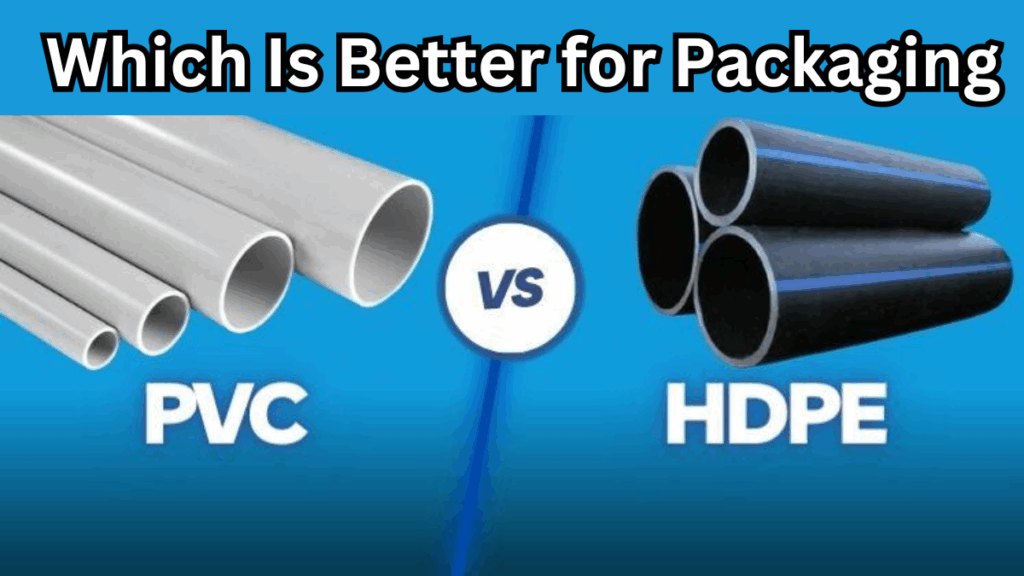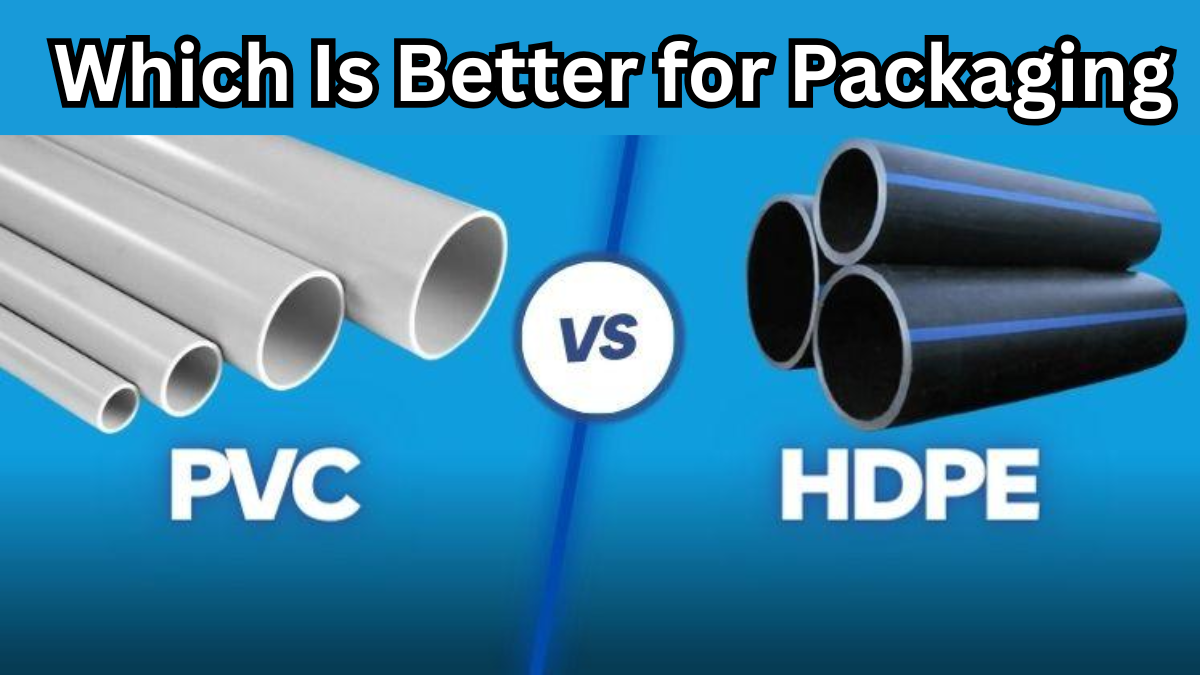In the fast-evolving world of packaging, selecting the right material can make a significant difference in durability, cost, and sustainability. Two of the most widely used plastics in packaging are PVC (Polyvinyl Chloride) and HDPE (High-Density Polyethylene). Let’s dive into a detailed PVC vs HDPE industrial comparison to help businesses make informed choices in 2025.

Understanding PVC and HDPE
PVC (Polyvinyl Chloride)
PVC is a versatile plastic widely used in packaging due to its clarity and durability. It is often employed in packaging liquids, pharmaceuticals, and household items.
-
Properties: Strong, rigid, and transparent
-
Applications: Bottles, blister packs, shrink wraps
-
Pros: Excellent clarity, chemical resistance, ease of printing
-
Cons: Less eco-friendly, can release harmful chemicals if burned
HDPE (High-Density Polyethylene)
HDPE is known for its high strength-to-density ratio and versatility in industrial applications. It is a top choice for containers, pipes, and packaging that require robustness.
-
Properties: Lightweight, durable, resistant to impact and chemicals
-
Applications: Milk bottles, detergent containers, plastic bags
-
Pros: Highly recyclable, strong, resistant to moisture and chemicals
-
Cons: Limited transparency, less suitable for high-end printed packaging
PVC vs HDPE – Industrial Comparison
Here’s a vertical comparison table for quick reference:
| Feature | PVC | HDPE |
|---|---|---|
| Strength | Moderate | High |
| Flexibility | Rigid to semi-flexible | Flexible |
| Transparency | Clear, excellent for display | Opaque or semi-translucent |
| Chemical Resistance | High | Very high |
| Cost | Moderate | Low to moderate |
| Recyclability | Low | High |
| Environmental Impact | Higher, less eco-friendly | Lower, more eco-friendly |
| Common Uses | Blister packs, cosmetic bottles | Milk jugs, detergent bottles, packaging films |
Key Factors to Consider in 2025
When deciding between PVC vs HDPE for packaging, consider:
-
Sustainability: HDPE leads in recycling potential and environmental safety.
-
Product Visibility: PVC is better if your product requires clear packaging for marketing appeal.
-
Durability: HDPE is more robust under heavy handling and chemical exposure.
-
Cost Efficiency: HDPE is often cheaper in bulk production, while PVC offers premium packaging options.
Industry Insights
-
Pharmaceutical Packaging: PVC dominates due to transparency and chemical resistance.
-
Food & Beverage: HDPE is preferred for liquids due to durability and safety.
-
Consumer Goods: Both materials are used, depending on whether aesthetics or strength is prioritized.
In 2025, the shift towards eco-friendly and recyclable packaging is driving industries to favor HDPE over PVC, especially for large-scale industrial packaging solutions.
FAQs
1. Which is more environmentally friendly, PVC or HDPE?
HDPE is more eco-friendly due to its high recyclability and lower environmental impact compared to PVC.
2. Can PVC and HDPE be used interchangeably in packaging?
Not always. PVC is ideal for transparent and decorative packaging, while HDPE is better for strength and chemical resistance.
3. Which material is more cost-effective for bulk packaging?
HDPE generally costs less, especially for large-volume industrial packaging.
4. Is PVC safe for food packaging?
Yes, PVC is used in certain food packaging applications, but HDPE is often preferred for safety and recyclability in the long term.
Click here to learn more
